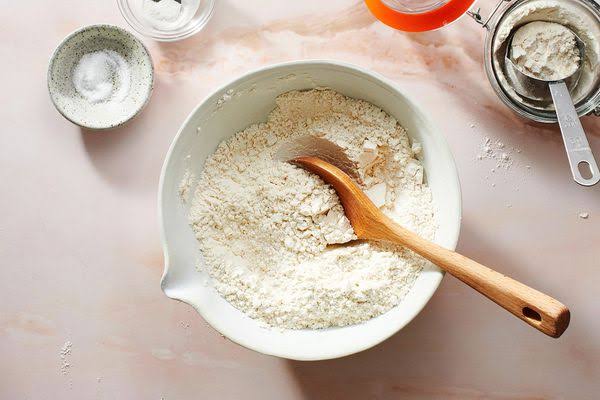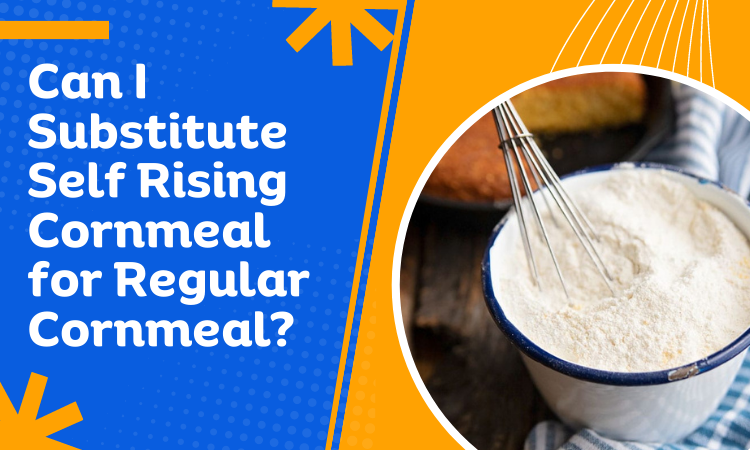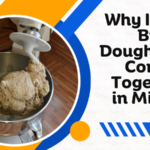There are two main types of cornmeal available – self-rising and regular cornmeal. While these look pretty similar, they have different ingredients which serve different purposes for cooking or baking.
However, maybe you are wondering if you can substitute self-rising cornmeal for regular cornmeal.
Yes, it is possible to substitute self-rising cornmeal for regular ones. But self-rising cornmeal already contains leavening agents like baking powder, and salt in it which regular cornmeal does not. So, if you are using self-rising cornmeal instead, you should refrain from using any baking powder in it. And you should be good to go.
Well, that was not all. In this guide, we are going to explore the dissimilarities between self-rising and regular cornmeal and answer your queries.
Is It Possible to Substitute Self Rising Cornmeal for Regular Cornmeal?

Yes, it is possible to substitute the self rising cornmeal for your regular cornmeal.
If you want to substitute the self-rising cornmeal for regular cornmeal in a recipe, you should not add any extra baking powder to it. Even if it is mentioned in the ingredients list, leave it out because it is already there in the self rising cornmeal. However, you can leave the baking soda in.
How do you substitute self-rising cornmeal for cornmeal?
First of all, let’s be clear about the question: Is self-rising cornmeal the same as cornmeal?
No, self-rising cornmeal is actually a type of cornmeal that already has baking powder and salt added. As a result, it helps the food rise when baked. But regular cornmeal does not have it.
So, to substitute self rising cornmeal for cornmeal, here is how you should do it.
- If your recipe requires, let’s say, 1 cup of cornmeal and 1 tablespoon of baking powder, just add the self rising corn meal. And leave the baking powder and salt out.
- Suppose your recipe, in contrast, requires 1 cup of cornmeal and 2 tbsps of baking powder. That means it requires more baking powder than regular.
For example, it happens while baking pies, cakes, etc. If so, add 1 cup of self-rising cornmeal along with 1 tbsp of baking powder.
Thus you can substitute self rising for regular cornmeal.
Can I Use Cornflour Instead of Cornmeal?
Yes, corn flour can be used in place of cornmeal.
However, it totally depends on what recipe you are aiming for and what kind of outcome you want.
While you can use corn flour to thicken a recipe, you won’t be able to achieve the same texture as with cornmeal. Especially when making dishes like grits or polenta. That is because corn flour is much more finely ground.
When substituting corn flour for cornmeal in baking, keep in mind that the finished product may be fluffier and less dense in texture.
This means that you should bake it for a shorter amount of time. You may also need to use more corn flour to get the consistency you’re looking for.
Are Self Rising Cornmeal and Self Rising Flour the Same?
No, self rising cornmeal and flour are not similar to each other.
- Self-rising flour is typically a mixture of all-purpose flour and several leavening agents. Self-rising cornmeal does not have all-purpose flour in it.
- Also, the self rising flour mainly comes from ground wheat. On the other hand, self rising cornmeal is a product of finely ground corn.
- On top of that, self rising cornmeal and self rising flour can not be substituted for each other because they have very different textures. This may also lead to tacky dough. So, you can’t expect similar results. The taste may differ as well.
For instance, if you are making pancakes or muffins, using self-rising cornmeal instead of flour will result in a coarser and grittier texture. Similarly, when making pizzas sometimes the pizza may stick to the pan.
What Can I Use If I Don’t Have Cornmeal?
There are various other items that can be used as regular cornmeal substitutes if you don’t have cornmeal at hand.
If your goal is to enhance the taste, you can replace cornmeal with other corn-based products. Products such as corn grits, cornflour, or polenta, each with a different coarseness.
On the other hand, if you want to add texture to your dish, you need to look for a replacement. Something with a similar consistency to cornmeal. For instance, you can use coarse wheat flour, semolina, masa harina, or other similar products.
So, before choosing a replacement for cornmeal, it’s important to consider your recipe and the desired outcome.
How to Make Self Rising Cornmeal?
If a recipe requires self-rising cornmeal but you don’t have it, you can make your own mix easily and quickly with this simple recipe. Make sure to keep the mix in a labeled and sealed container in either the pantry or refrigerator. So that you have it ready whenever you need it. If you make extra, you can even store it for future use.
However, you can follow the process below to make 1 cup of self rising cornmeal.
Ingredients to make self rising cornmeal:
- 15 Tbspn of cornmeal. You can use either white or yellow regular or stone-ground ones)
- Baking powder (1 tbsp )
- Salt (½ tsp)
Steps to Follow:
- First of all, start by gathering all the ingredients listed here.
- Then put all those ingredients into a bowl and whisk them til they are nicely blended.
- Once mixed, store the mixture in a large sealed container or a zip-top food storage bag in either the pantry or refrigerator.
Tips: To ensure your baked goods rise properly, it’s important to use fresh baking powder when making baking or baking mix recipes. Baking powder that is more than 3 or 4 months old may not work as well as you expect.
What Are The Benefits of Leavening Agents in Self Rising Cornmeal?
Leavening agents in self rising cornmeal help make the batter light and airy by releasing carbon dioxide. When an acid and a base react with heat and moisture, they produce carbon dioxide (CO2). This chemical reaction is crucial for achieving the right volume in cakes.
As you know, self-rising cornmeal is a type of cornmeal that already has baking powder and salt mixed in. So, you can use it to make various baked goods such as cornbread, muffins, pancakes, biscuits, and waffles. If you’re wondering where to buy self-rising cornmeal, you can check your local grocery store or online retailer.
Frequently Asked Questions (FAQs):
Are There Any Differences Between White and Yellow Self Rising Cornmeal?
The key difference between these two varieties of cornmeal is their color. White cornmeal is normally produced from white corn kernels. In contrast, yellow cornmeal gets produced from yellow kernels. Also, white cornmeal is generally ground a little finer than yellow cornmeal.
Can I use self rising cornmeal for cornbread?
Yes, you can use self rising cornmeal for cornbread. As self rising cornmeal is finely ground and smooth, it makes a good choice for cornbread. Use preferably the yellow ones to get the desired color of your cornbread.
Which is better: cornmeal or flour?
Cornmeal is better than flour. Compared to white flour, it has fewer calories, less sodium, and fewer carbohydrates. It also has more fiber. Another advantage of cornmeal is that it is gluten-free, meaning that people who have an allergy to gluten can safely consume it. On the other hand, white flour is a refined flour that is often used in baking. It doesn’t have as much nutrition as cornmeal and has very little fiber.
Wrapping Up
Hope I have resolved your confusion of whether you can substitute self rising cornmeal for regular cornmeal.
Adjust the recipe to account for the factors given here. By doing so it is possible to successfully use self-rising cornmeal as a substitute for regular cornmeal in most cases.
This is all as of now. Have an awesome day!





